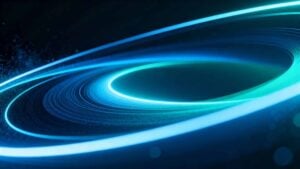A key strategy being deployed by organizations seeking to improve their customers’ experiences includes leveraging both artificial intelligence (AI) and digital messaging, with the goal of supporting interactions with customers through the channels of their choice. A real-world example of this strategy being deployed can be found with NAB, one of the largest banks in Australia, which worked with contact center software vendor Khoros to transform the bank’s digital messaging capability, accelerate digital servicing for customers, and expand the level of support on the digital channels that customers prefer.
NAB employees more than 30,000 people, who serve 8 million customers throughout Australia, New Zealand, and around the world. While the typical communication channel used to contact financial service providers has been voice, several factors have been in play that are helping to shift engagements to alternative digital channels.
For one, long wait times in the queue for voice communications has led many customers to seek other ways to engage with their provider, including chat, web messaging, mobile applications, and even social media. The goal is to reduce the amount of time waiting to speak to a human to get a response.
Second, certain tasks simply do not require the complexity and skills of a human to complete. Basic financial actions, such as checking balances, verifying whether a transaction has been completed, or even transferring money, can usually be completed more quickly using automated tools and digital assistants.
A third driver is familiarity with digital interactions. Since the dawn of the (admittedly clunky) interactive voice response (IVR) technology of several decades ago, to the near human-like home digital assistants (Alexa, Google Assistant, Siri, etc.), consumers have become more familiar and comfortable talking to machines. Moreover, many customers prefer not having to directly speak with live agents, simply because they often believe their engagement can be handled more efficiently via digital and automated technologies.
In recent years, NAB observed a massive increase in consumer demand for digital engagement in recent years. In just 2020 alone, more than 3 million web chat conversations were answered by the NAB digital virtual assistant, a 3x increase over the previous year’s volume. Moreover, according to NAB, 94% of the bank’s customer interactions are digital, which portended the need to focus closely on supporting digital messaging within a contact center platform.
NAB selected Khoros’ platform to deliver a new digital messaging capability to meet its growing customer needs. The Khoros platform incorporates a digital-first, “single pane of glass” platform for all customer interactions, while also using AI to provide relevant insights and data directly to live agents while they are interacting with a customer, enabling a 360° view of customer engagement. The platform also captures and incorporates data from all customer interactions and disparate data platforms, and all conversations can be aggregated and analyzed with Khoros CX Insights to continuously reduce volume and improve service quality and efficiency.
According to Khoros, its integrated contact center platform has been used by customers to deflect inquiries to self-service communities and high first call resolution (FCR) messaging channels, reducing volume by 15%. The platform can also contain inquiries with Khoros Bot and reduce volume by 25%. When live agents are required to serve customers, the platform supports full omnichannel engagement and can help increase agent efficiency by 40%.
Contact center platforms like Khoros’ are clearly helping reinvent how companies deploy their contact center strategies, as well as how customers interact with organizations. For more insights into this market segment, see Dash Research’s forthcoming CX for Contact Centers report, which is slated for publication in late February 2022.
Author Information
Keith Kirkpatrick is Research Director, Enterprise Software & Digital Workflows for The Futurum Group. Keith has over 25 years of experience in research, marketing, and consulting-based fields.
He has authored in-depth reports and market forecast studies covering artificial intelligence, biometrics, data analytics, robotics, high performance computing, and quantum computing, with a specific focus on the use of these technologies within large enterprise organizations and SMBs. He has also established strong working relationships with the international technology vendor community and is a frequent speaker at industry conferences and events.
In his career as a financial and technology journalist he has written for national and trade publications, including BusinessWeek, CNBC.com, Investment Dealers’ Digest, The Red Herring, The Communications of the ACM, and Mobile Computing & Communications, among others.
He is a member of the Association of Independent Information Professionals (AIIP).
Keith holds dual Bachelor of Arts degrees in Magazine Journalism and Sociology from Syracuse University.








